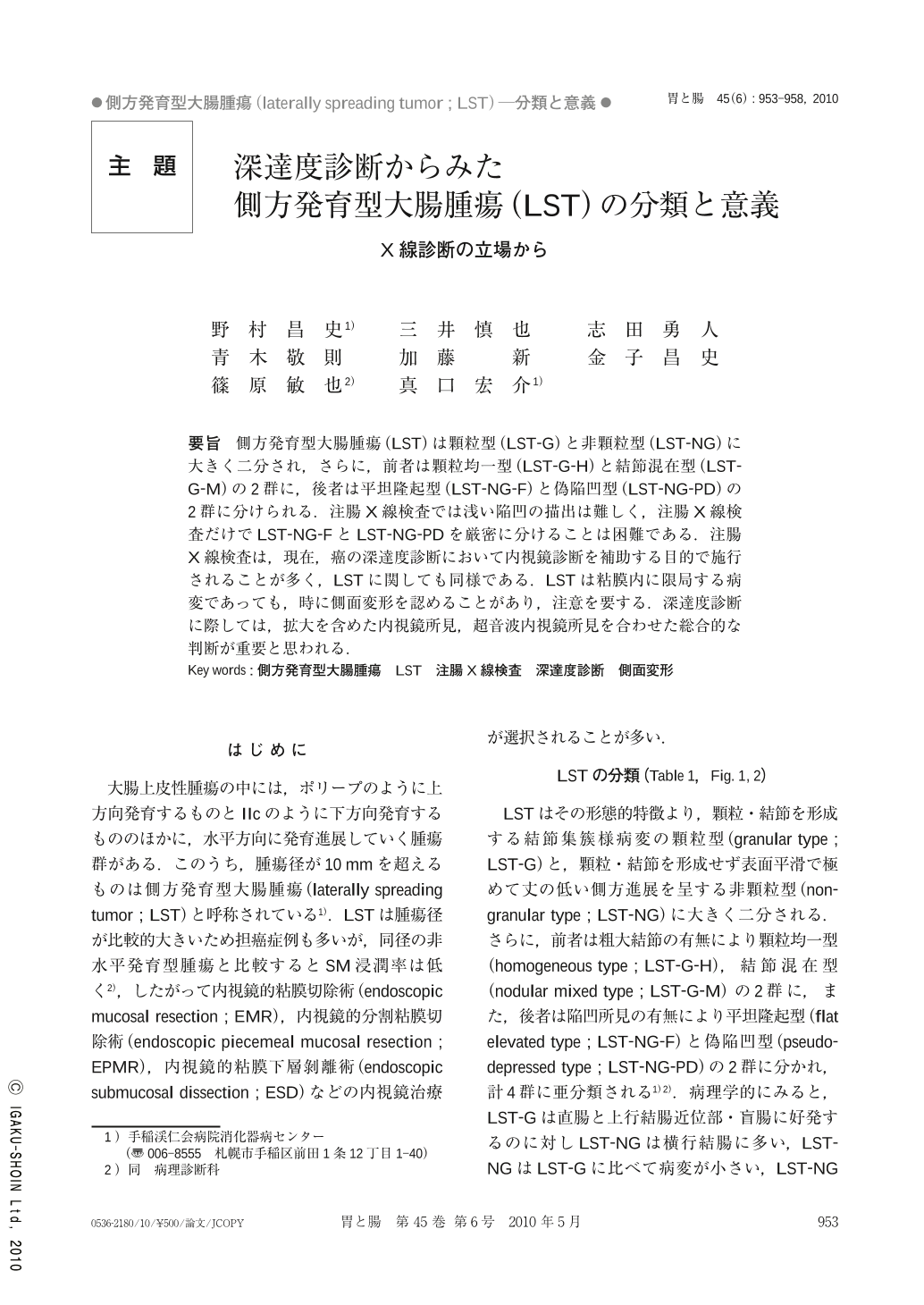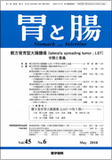Japanese
English
- 有料閲覧
- Abstract 文献概要
- 1ページ目 Look Inside
- 参考文献 Reference
- サイト内被引用 Cited by
要旨 側方発育型大腸腫瘍(LST)は顆粒型(LST-G)と非顆粒型(LST-NG)に大きく二分され,さらに,前者は顆粒均一型(LST-G-H)と結節混在型(LST-G-M)の2群に,後者は平坦隆起型(LST-NG-F)と偽陥凹型(LST-NG-PD)の2群に分けられる.注腸X線検査では浅い陥凹の描出は難しく,注腸X線検査だけでLST-NG-FとLST-NG-PDを厳密に分けることは困難である.注腸X線検査は,現在,癌の深達度診断において内視鏡診断を補助する目的で施行されることが多く,LSTに関しても同様である.LSTは粘膜内に限局する病変であっても,時に側面変形を認めることがあり,注意を要する.深達度診断に際しては,拡大を含めた内視鏡所見,超音波内視鏡所見を合わせた総合的な判断が重要と思われる.
Among colorectal neoplasms, there is a certain group that is likely to extend laterally rather than vertically along the colonic wall. This group of lesions is defined as laterally spreading tumor(LST). LST is classified into granular type and non-granular type. The former is further divided into two groups : homogeneous type and mixed nodular type. The latter is divided into two more groups : flat elevated type and pseudo-depressed type. Radiographic detection on the surface depression is hard, so it is difficult with barium enema to distinguish between the flat elevated type and the pseudo-depressed type. Though lateral view findings are useful for estimation of the invasion depth of colorectal carcinomas, some LST cases do not have lateral views and some LSTs within the mucosal layer indicate radiographic deformities in the lateral view findings. Comprehensive diagnosis including endoscopic and ultrasound findings is important for the diagnosis of the invasion depth of LSTs.

Copyright © 2010, Igaku-Shoin Ltd. All rights reserved.


